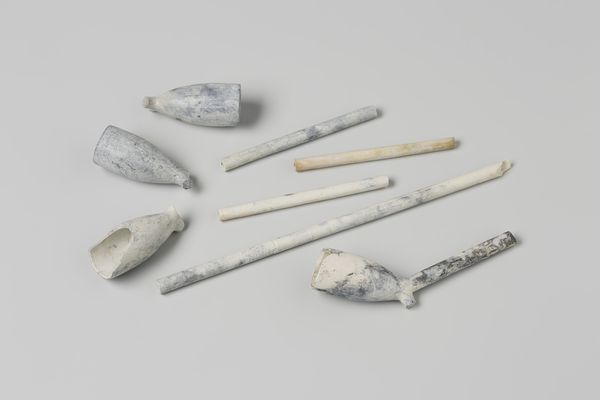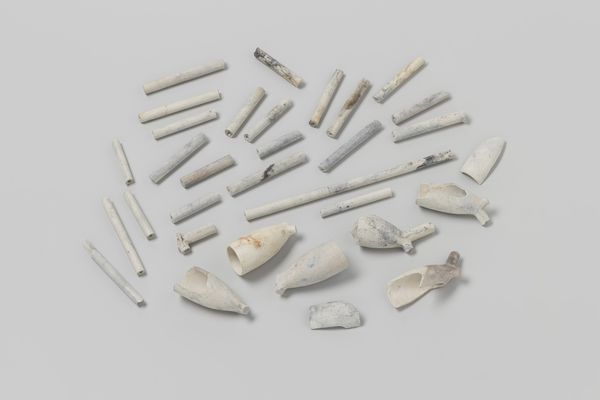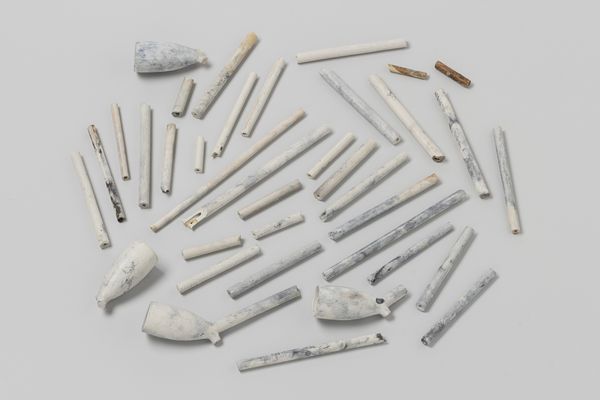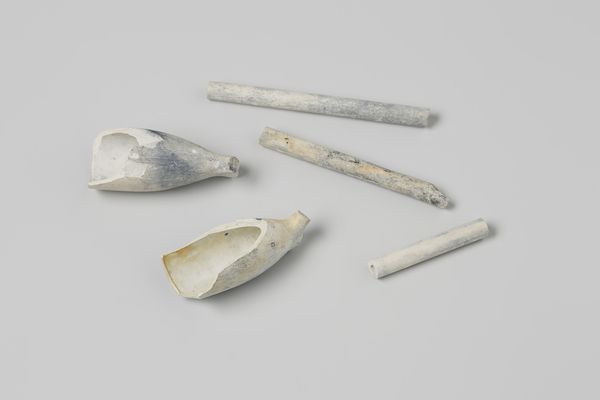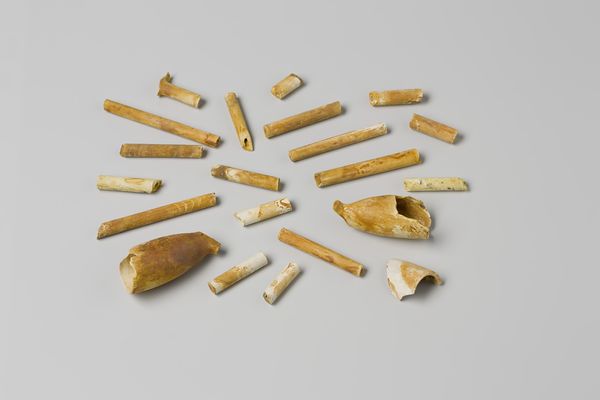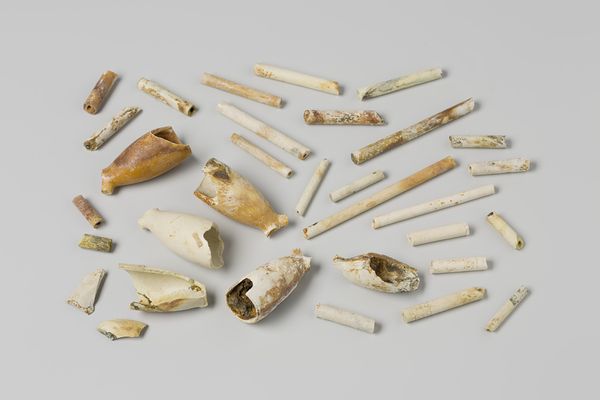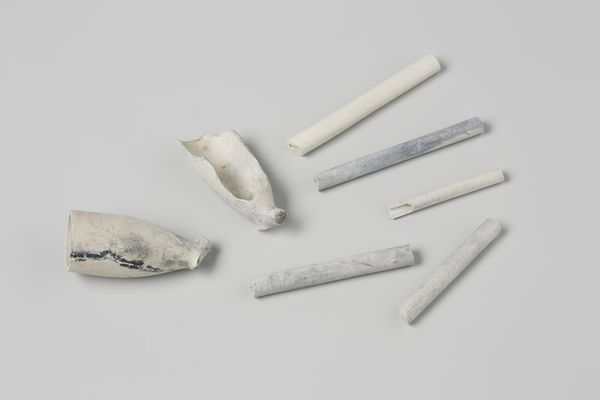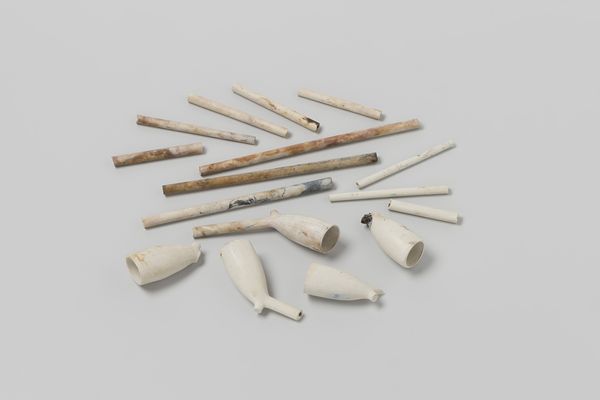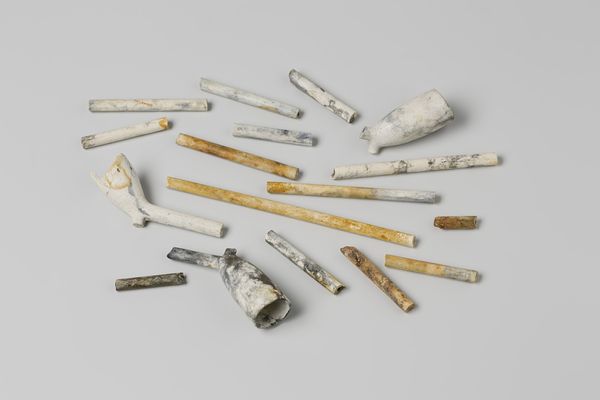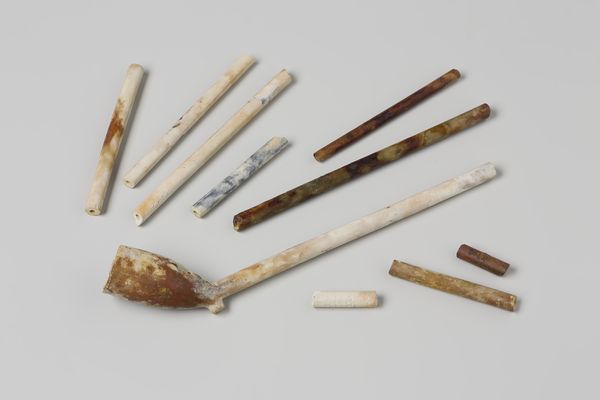
Fragmenten van pijpenkoppen en pijpenstelen uit het wrak van de Oost-Indiëvaarder 't Vliegend Hart Possibly 1728 - 1735
0:00
0:00
ceramic
#
dutch-golden-age
#
ceramic
#
ceramic
Dimensions: length 7 cm, width 2.1 cm, depth 3 cm, length 1.7 cm, diameter 0.5 cm
Copyright: Rijks Museum: Open Domain
Curator: What we have here are Fragments of pipe heads and pipe stems recovered from the wreck of the East Indiaman 't Vliegend Hart. These ceramic pieces possibly date from between 1728 and 1735, offering a ghostly echo of life aboard that ship. Editor: Wow, looking at these broken bits, I can almost smell the faint aroma of forgotten tobacco. They have an oddly serene quality. It is so minimal and fragile; they give off almost an archaeological vibe of something like a Pompeii relic—if Pompeii smoked! Curator: The archaeological angle is quite apt. Recovered artifacts like these are invaluable historical sources. The prevalence of smoking pipes aboard trading vessels during that time says volumes about the habits and culture of seafarers and maritime trade. It highlights the pervasiveness of tobacco as a global commodity, shaping economies and social rituals across continents. Editor: And consider each pipe representing countless moments of contemplation, boredom, camaraderie...or, you know, pure nicotine fits during endless ocean voyages! There is that one nearly intact stem, though, darker than the rest, giving an indication of what smoking has cost all these years! It also makes you think about those lost at sea. What are they now fragments of? Curator: Precisely. The pipes illustrate the quotidian lives of sailors and the globalization of commodities during the Dutch Golden Age, whilst the ship itself and the disaster reflects a larger story of global commerce, colonization, and perhaps the hubris of empire. The ubiquity of tobacco underscores its social and economic importance at that time. Editor: It's eerie how these humble fragments open up such expansive narratives about trade, social customs, and human dramas unfolding on the high seas. Even now I feel like I can pick them up! It certainly reframes the whole 'age of exploration' for me in something tangible and strangely… human. Curator: Indeed. They ground us, through a discarded, yet resonant materiality in a period often romanticized or sanitized by conventional histories. They serve as potent reminders of everyday lived experiences and provide us with access points for re-evaluation. Editor: Absolutely, next time I see an 'Old Master' painting of ships sailing past on an ocean breeze, I will remember these fragments, lying on the seabed with the 'Old Masters', wondering if I am romanticizing what happened...or not!
Comments
No comments
Be the first to comment and join the conversation on the ultimate creative platform.
